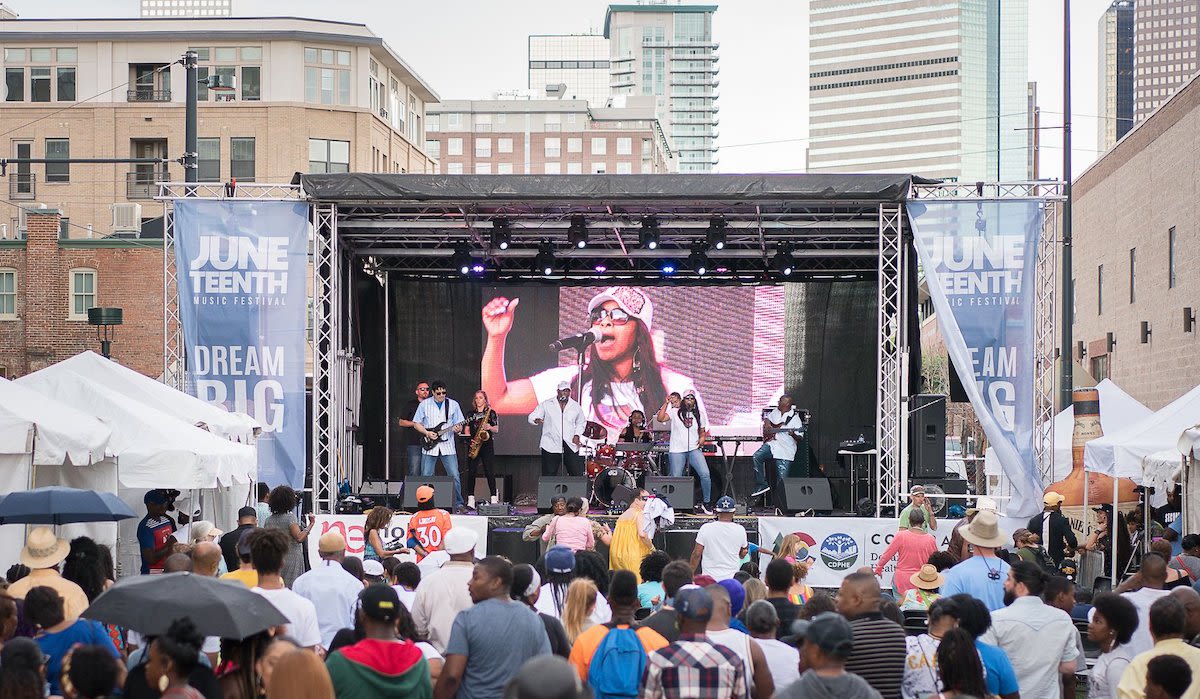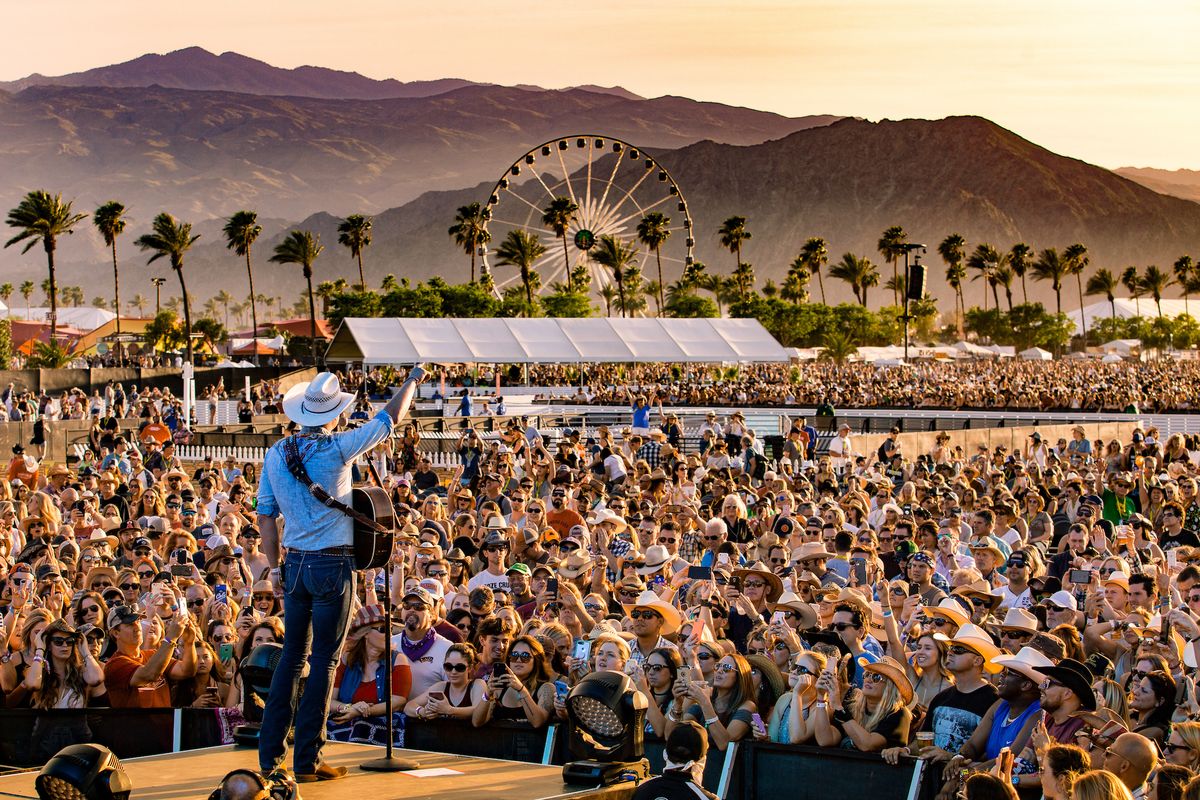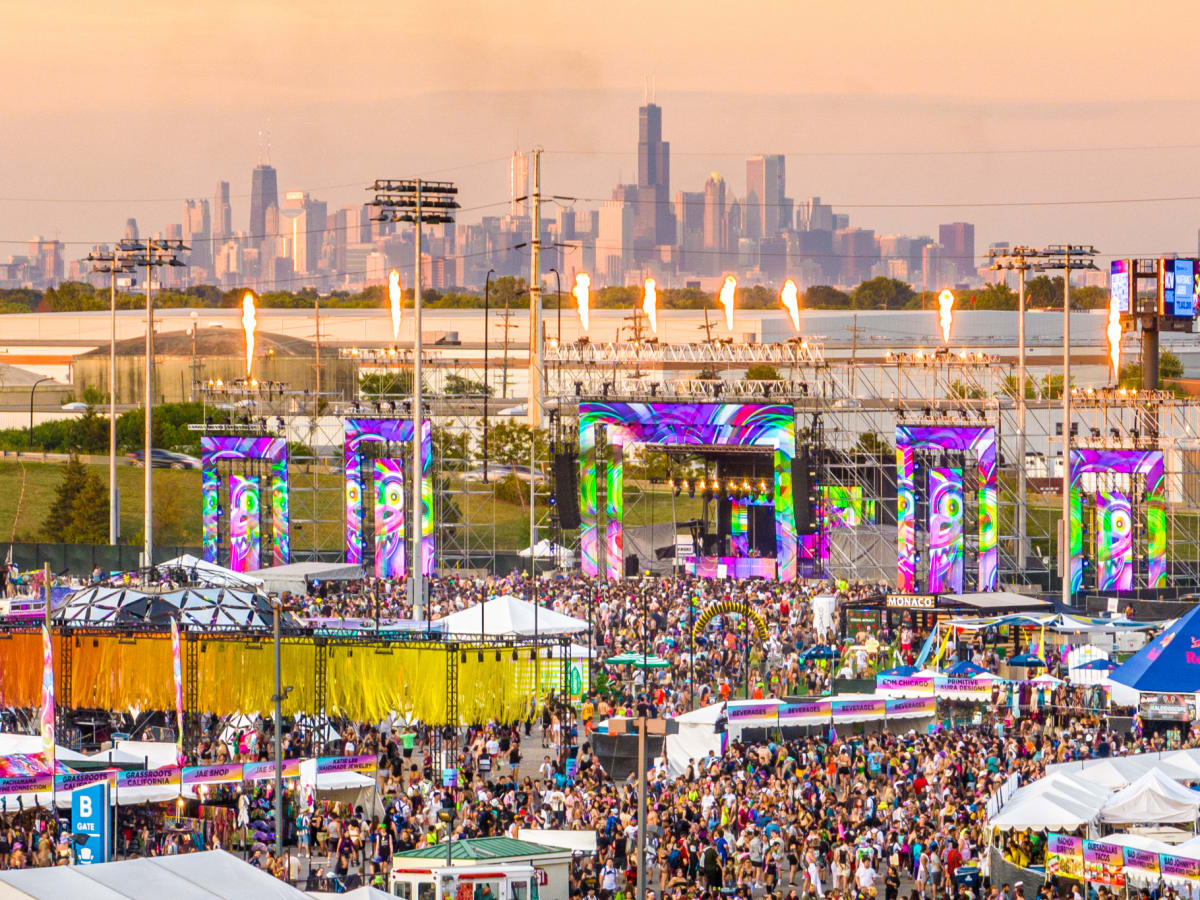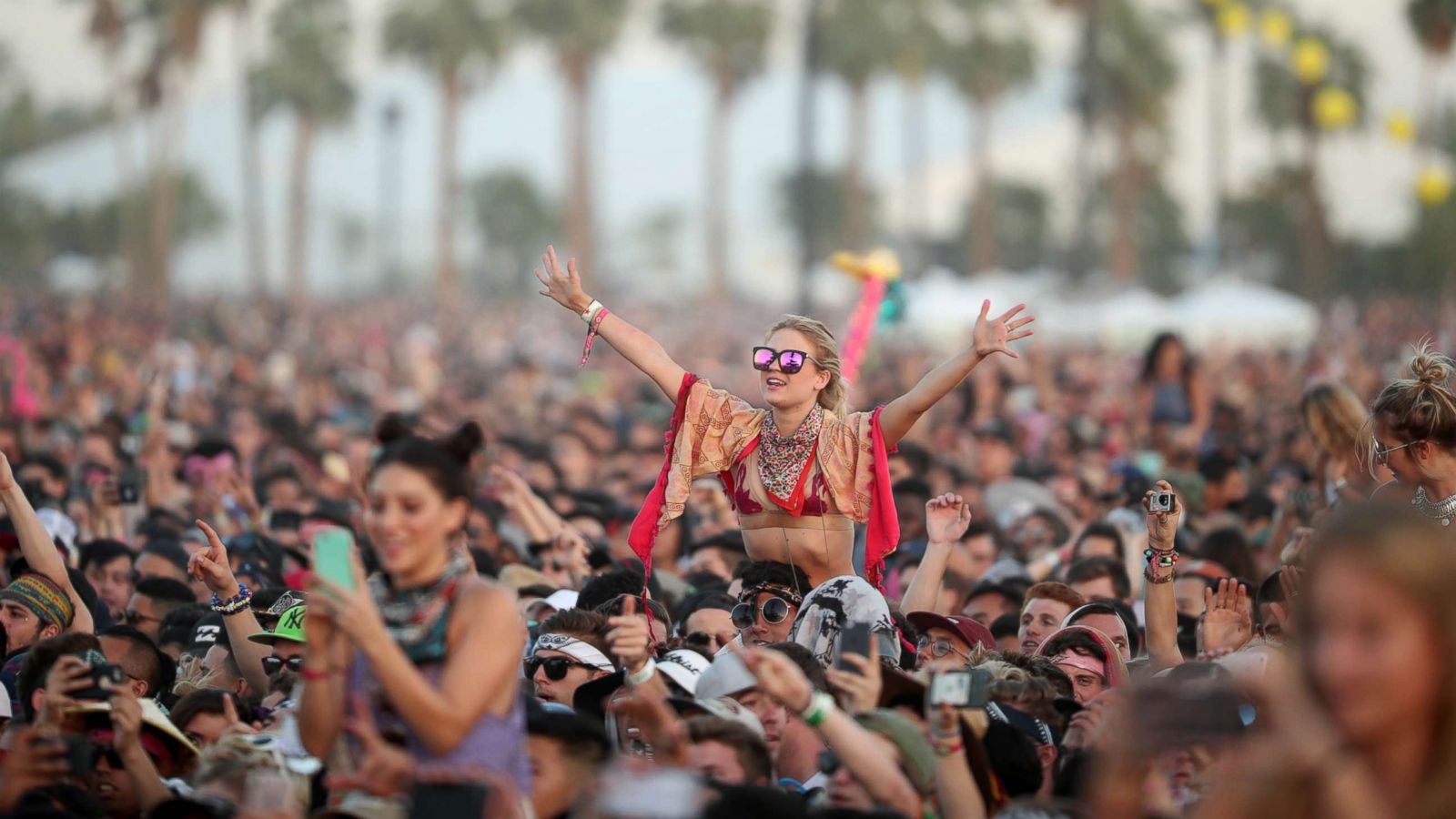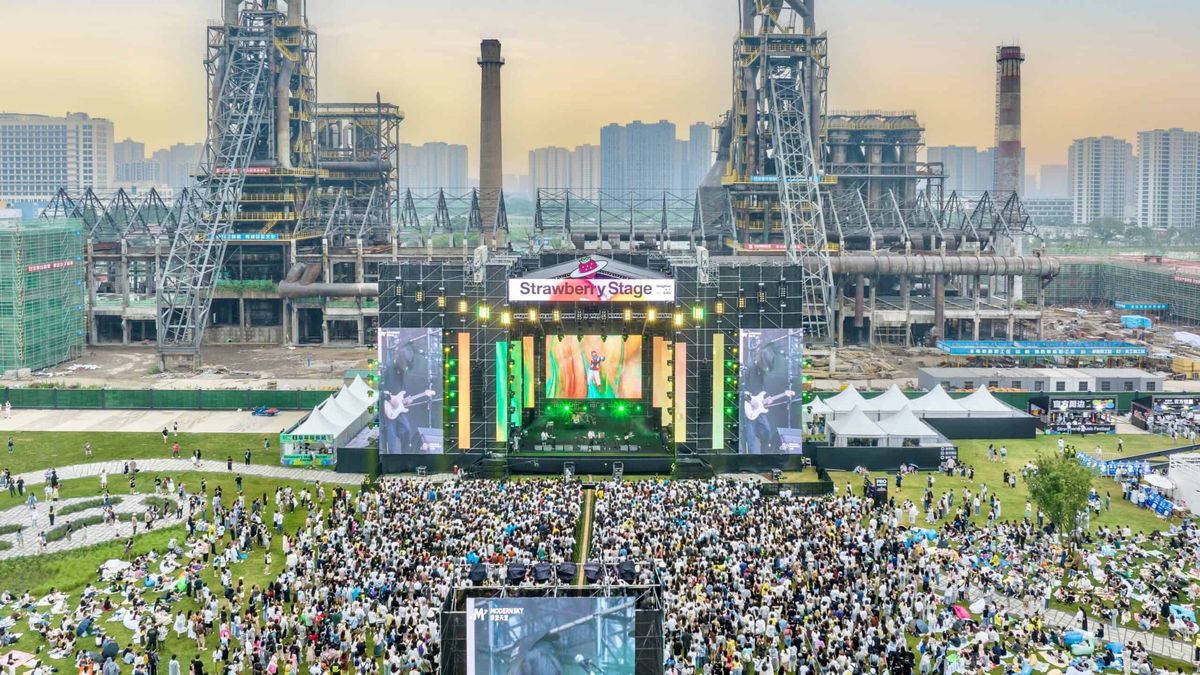Home>Events & Info>Festival>Where Was The Woodstock Music Festival


Festival
Where Was The Woodstock Music Festival
Modified: January 22, 2024
Experience the iconic Woodstock Music Festival and relive the magic of this legendary festival. Discover where the historic event took place and immerse yourself in the spirit of the festival.
(Many of the links in this article redirect to a specific reviewed product. Your purchase of these products through affiliate links helps to generate commission for AudioLover.com, at no extra cost. Learn more)
Table of Contents
Introduction
The Woodstock Music Festival, also known as Woodstock or the Woodstock Festival, is widely regarded as one of the most iconic and influential music events in history. It was a three-day long festival that took place from August 15 to 18, 1969, in Bethel, New York. What started as a simple idea to gather music lovers for a weekend of peace and music turned into a cultural and generational phenomenon that defined the counterculture movement of the 1960s.
The festival was originally planned to be held in a different location but faced numerous logistical and legal challenges. Ultimately, it found its home on Max Yasgur’s farm in Bethel, a small rural town in upstate New York. What was initially expected to attract around 50,000 attendees ended up drawing a crowd of over 400,000 people, making it the largest music festival of its time.
Woodstock became synonymous with the hippie movement, psychedelic music, and the spirit of love, peace, and unity. It showcased some of the era’s most influential musicians and bands, including Jimi Hendrix, Janis Joplin, The Who, Santana, Crosby, Stills, Nash & Young, and many others. The event was a celebration of counterculture values, anti-establishment sentiments, and a yearning for a better and more harmonious world.
Decades after its occurrence, Woodstock continues to captivate the imagination of people around the world. Its legacy goes beyond the music and the massive crowd. Woodstock represented a cultural turning point, a musical and social revolution that inspired future generations and left an indelible mark on popular culture.
In this article, we will delve into the origins of Woodstock, the selection of the location, the planning and organization, the lineup of artists, the challenges faced, and the lasting legacy of this remarkable festival. Join us as we revisit the three days of peace, love, and music that defined a generation.
The Origins of Woodstock
The idea for Woodstock was conceived by four young entrepreneurs: John Roberts, Joel Rosenman, Artie Kornfeld, and Michael Lang. They envisioned creating a music festival that would bring together the counterculture movement and provide a platform for the emerging rock music of the late 1960s.
The concept for the festival was born out of the desire to replicate the joy and camaraderie experienced at smaller music gatherings, such as the Newport Folk Festival and the Monterey Pop Festival, but on a much larger scale. The organizers wanted to create an event that would transcend music and become a symbol of unity and cultural change.
Originally, the festival was planned to be held in the town of Wallkill, New York. The organizers secured a site, but as the news of the upcoming event reached the local community, opposition began to grow. Concerns about traffic congestion, noise, and potential harm to the area’s reputation led the town to pass a last-minute ordinance banning the festival.
Undeterred by the setback, the organizers scrambled to find a new location in a short period of time. They approached Elliot Tiber, a Bethel-based resident, who offered the use of his land for the festival. There was initially apprehension from locals and the Bethel Town Board, but ultimately they decided to support the event, recognizing the potential economic benefits it could bring to the community.
With a new location secured, the organizers faced another hurdle: financing. They approached various investors, but most were skeptical about the profitability of such a massive event. However, they found a financial backer in the form of a wealthy heir, John P. Roberts, who provided the necessary funds to make Woodstock a reality.
As news of the festival spread, anticipation and excitement grew. The organizers saw Woodstock as more than just a music festival; it was a statement against war, injustice, and social inequality. The festival was positioned as a symbol of hope and a call for peace.
On August 15, 1969, thousands of young people embarked on a journey to Bethel, unsure of what to expect. Little did they know that they were about to be part of a historic event that would transcend their wildest dreams and become a defining moment of the 1960s counterculture movement.
Choosing the Location
After the original plan to hold Woodstock in Wallkill, New York fell through, the organizers were left scrambling to find an alternative location that could accommodate the massive crowd they anticipated. That’s when a stroke of luck led them to Bethel, a small town in upstate New York.
Elliott Tiber, a Bethel resident, caught wind of the organizers’ dilemma and saw an opportunity to put his town on the map. He offered his family’s dairy farm as a potential venue for the festival. The organizers, desperate to find a suitable location, accepted the offer and began making plans to transform the rolling fields of Bethel into the site of Woodstock.
Bethel, located about 60 miles southwest of the original planned location, proved to be an idyllic setting for the festival. With its peaceful countryside, picturesque landscape, and proximity to major cities like New York City, it offered a convenient escape for young people seeking an alternative lifestyle away from the pressures of mainstream society.
The decision to hold Woodstock in Bethel was not without its challenges. The local community initially had reservations about hosting such a massive event. Concerns about traffic, security, and the potential disruption of their quiet town were on the minds of many Bethel residents.
However, as discussions progressed, the organizers assured the town officials that they would take all necessary measures to ensure the safety and well-being of both the attendees and the community. Recognizing the economic benefits that Woodstock could bring to the area, the Bethel Town Board ultimately voted in favor of allowing the festival to take place.
The site itself, known as Max Yasgur’s farm, offered ample space for the sprawling crowds that would descend upon Bethel. The rolling hills and open fields provided a natural amphitheater-like setting, allowing for optimal visibility of the stage from various vantage points.
One of the key factors that made Bethel an attractive option was its proximity to major transportation routes. The New York State Thruway and other major highways made it accessible for people coming from all over the country. Additionally, nearby Sullivan County Airport offered an alternative for those who wished to travel by air.
In the end, the choice to hold Woodstock in Bethel, New York, proved to be a serendipitous decision. The tranquil beauty of the town and its willingness to embrace the festival created the perfect backdrop for the three days of peace, love, and music that would soon unfold.
Bethel, New York: The Final Destination
When the organizers of Woodstock settled on Bethel as the new location for the festival, they had no idea that it would become the historic and iconic site that it is known as today. Bethel, a small town in upstate New York, became the final destination for the legendary three-day music festival that would forever change the course of music history.
Located in Sullivan County, Bethel provided a picturesque and serene backdrop for Woodstock. The rolling hills, lush green fields, and peaceful countryside created an atmosphere conducive to the spirit of the festival – a place where people could escape the chaos of the outside world and immerse themselves in music, love, and unity.
Max Yasgur’s farm, the specific location within Bethel that became the site of Woodstock, offered ample space to accommodate the massive crowds that flocked to the festival. Spread across nearly 600 acres, the farm provided an open and natural setting for the stages, camping areas, and other facilities.
The decision to hold Woodstock in Bethel was met with mixed reactions from the local community. Some saw the festival as an opportunity for economic growth and exposure for the town, while others had concerns about the impact it would have on the area. However, in the end, the Bethel Town Board voted in favor of allowing the festival to take place, recognizing the potential benefits it could bring.
As the festival drew nearer, the organizers worked closely with the local authorities and community leaders to address concerns and ensure a smooth and successful event. Efforts were made to establish proper infrastructure, including sanitary facilities, medical tents, and food vendors, to cater to the needs of the massive crowd that was expected to descend on Bethel.
During the festival, Bethel transformed into its own unique world, as a wave of peace and love washed over the fields and captured the hearts and minds of everyone present. The makeshift city that sprouted on Max Yasgur’s farm became a symbol of the counterculture movement, with its free-spirited atmosphere, impromptu communal living, and the sound of music reverberating in the air.
Today, Bethel remains closely associated with Woodstock. The original festival site is now home to the Bethel Woods Center for the Arts, an outdoor venue that hosts concerts, exhibits, and events, keeping the spirit of Woodstock alive. Additionally, the Bethel Woods Museum provides a comprehensive look back at the history and impact of the festival, keeping the memories and legacy of those three historic days alive for future generations.
It is a testament to the power of Woodstock that Bethel, a small town in upstate New York, will forever be etched in music history as the final destination of an event that transcended its original intentions and became a symbol of love, peace, and the power of music.
The Planning and Organization
Organizing an event of the magnitude of Woodstock required meticulous planning and coordination. The four young entrepreneurs behind the festival, John Roberts, Joel Rosenman, Artie Kornfeld, and Michael Lang, faced numerous challenges as they worked tirelessly to bring their vision to life.
From securing financing to managing logistics, the organizers faced a myriad of hurdles in the months leading up to the festival. One of their first tasks was to assemble a team to handle different aspects of the event. This included hiring security personnel, medical staff, stage crew, and volunteers to ensure the smooth operation of the festival.
Another key aspect of the planning process was securing high-profile musical acts to perform at the festival. The organizers reached out to renowned artists and bands of the era, such as Jimi Hendrix, The Who, Janis Joplin, and Creedence Clearwater Revival, to name a few. Remarkably, many artists agreed to perform without prior knowledge of the festival’s scale, putting their trust in the organizers’ ambitious vision.
However, coordinating performances and managing the schedule proved to be a significant challenge. The organizers had to account for the logistics of transporting the artists to the remote location, ensuring proper sound equipment and setup, and accommodating the sheer number of performers over the course of the three-day event.
The logistics extended beyond just the performers. The organizers also had to consider the needs of the massive crowd that was expected to attend. This included setting up camping areas, food and water provisions, and sanitary facilities to accommodate the basic needs of the attendees.
Perhaps the most significant logistical challenge was managing the influx of hundreds of thousands of people who descended upon Bethel for the festival. The organizers had to devise a system to handle transportation and traffic flow, anticipating the influx of vehicles and providing alternative transportation options. They worked closely with local authorities and law enforcement to ensure a safe and orderly experience for all who attended.
One of the unique aspects of Woodstock was the ticketing system. Initially, the organizers planned to have attendees purchase tickets in advance, but due to numerous obstacles in implementing this process, they eventually decided to make the event free. This contributed to the overwhelming turnout, as word spread and people flocked to the festival.
Overall, the planning and organization of Woodstock was a Herculean task. The organizers faced countless challenges and uncertainties, but their perseverance and dedication to their vision ultimately paid off. The event that began with a simple idea of peace and music turned into a cultural phenomenon that still resonates today.
Building the Stage and Facilities
Creating a stage and facilities to accommodate the massive Woodstock crowd was an immense undertaking. The organizers had to transform a dairy farm into a temporary city, complete with a stage for the performers and essential amenities for the attendees.
The primary focus was constructing a stage that could accommodate the numerous artists scheduled to perform at the festival. The stage needed to be sturdy enough to support heavy equipment and withstand the enthusiastic crowds, while also providing optimal visibility and acoustics.
Working with limited time and resources, the organizers enlisted the help of local carpenters and volunteers to bring the stage to life. They utilized available materials, including wood, scaffolding, and lighting rigs, to construct a formidable structure that became the centerpiece of the festival.
Aside from the stage, it was essential to create facilities to cater to the basic needs of the attendees. This included setting up camping areas capable of accommodating the crowd, providing safe and functional bathroom facilities, and ensuring access to clean drinking water.
The camping areas were sprawling and allowed attendees to set up tents and makeshift shelters in designated areas across the farm. However, the overwhelming attendance far exceeded the organizers’ expectations, leading to overcrowding and improvisation on the part of the attendees.
To address the sanitary needs of such a large crowd, a considerable number of portable toilets were brought in. However, the sheer volume of attendees overwhelmed the available facilities, resulting in some inconveniences and challenges in maintaining cleanliness.
Providing access to clean drinking water was a crucial aspect of the facilities. The organizers set up multiple water stations throughout the festival grounds, offering a reliable source of hydration for the thousands of people in attendance.
In addition to the stage and amenities, the organizers also developed makeshift medical facilities to provide medical assistance to anyone in need. They worked with local medical personnel and volunteers to set up medical tents equipped with basic supplies and staffed by doctors and nurses.
The construction and setup of the stage and facilities required a tremendous amount of coordination, creativity, and resourcefulness. The organizers faced numerous challenges along the way, adapting plans to accommodate the unforeseen influx of attendees.
Despite the logistical hurdles, the makeshift city that emerged on Max Yasgur’s farm provided the necessary infrastructure for a transformative event. Woodstock became a testament to the power of community and shared experiences, even in a setting that was initially ill-equipped to handle the massive crowd that came together for three days of peace, love, and music.
The Lineup of Artists
One of the defining aspects of Woodstock was its incredible lineup of artists. The festival showcased a wide range of talent from different genres, representing the vibrant and diverse music scene of the late 1960s.
Hundreds of musicians and bands performed at Woodstock, each contributing to the electric atmosphere and leaving an indelible mark on music history. Some of the most iconic and influential acts of the time took the stage during the three-day festival.
The lineup included legendary performers like Jimi Hendrix, who delivered a powerful and captivating performance that has become one of the most memorable moments of Woodstock. Hendrix’s genre-defying guitar skills and innovative sound left an unforgettable impression on the hundreds of thousands of people in attendance.
Janis Joplin, known for her soulful bluesy voice, also graced the Woodstock stage, mesmerizing the crowd with her raw and emotionally charged performances. Her powerful rendition of songs such as “Piece of My Heart” and “Ball and Chain” solidified her status as one of the greatest rock and blues vocalists of all time.
Other notable acts included The Who, known for their energetic and explosive stage presence, and Santana, whose fusion of Latin rhythms and psychedelic rock captivated the audience. Crosby, Stills, Nash & Young delivered beautiful harmonies, while Creedence Clearwater Revival gave a memorable performance with their timeless hits.
The lineup featured a variety of musical styles, from rock and folk to blues and soul. Richie Havens opened the festival with his powerful folk tunes, setting the tone for the days ahead. Country Joe McDonald’s performance with his band, The Fish, brought a sense of protest and political commentary to the stage with their anti-war anthem, “I-Feel-Like-I’m-Fixin’-to-Die Rag.”
Woodstock also brought attention to emerging artists of the time. Acoustic folk artist Melanie Safka charmed the crowd with her soulful voice and introspective songs, while rock band Ten Years After wowed with their energetic and virtuosic performances. The Grateful Dead, Jefferson Airplane, and Sly and the Family Stone were among the many other talented acts that left their mark on Woodstock.
The lineup was a blend of established acts and rising stars, showcasing the breadth and depth of talent within the music industry during that era. The diversity of musical styles and the caliber of performances added to the magic and appeal of Woodstock, making it a pivotal moment in music history.
Decades later, the Woodstock lineup continues to be celebrated and referenced as a testament to the cultural significance of the festival. The performances not only entertained the masses but also served as a reflection of the social and political climate of the time, capturing the spirit of a generation in search of change and musical revolution.
The Three Days of Peace and Music
The Woodstock Music Festival, held over three days from August 15 to 18, 1969, became synonymous with the ideals of peace, love, and unity. It was a transformative experience that saw hundreds of thousands of people come together for an unforgettable celebration of music and camaraderie.
The festival kicked off on Friday, August 15, with Richie Havens, who took the stage as the opening act. Havens set the tone for the event with his powerful and soulful performance, captivating the audience and setting the stage for the days ahead.
The iconic performances continued throughout the weekend, with legendary acts taking turns captivating the massive crowd. Artists from different genres and backgrounds took the stage, each bringing their unique sound and energy.
The atmosphere at Woodstock was unlike anything seen before. Despite the challenges brought on by the sheer number of attendees, a sense of community and togetherness prevailed. People helped one another, sharing food, water, and shelter. The feeling of unity and harmony was palpable, as individuals from all walks of life came together to celebrate music and a sense of collective purpose.
As the festival progressed, the days turned into nights filled with music and camaraderie. The nights at Woodstock were illuminated by the glow of bonfires and the uplifting sounds of music drifting through the air. The festival became a haven for free expression, with impromptu jam sessions, poetry readings, and conversations taking place amongst attendees.
Woodstock was not without its challenges. Heavy rainstorms turned the already muddy grounds into a swamp-like environment. The vast crowd made it difficult for emergency services to navigate, and food and water shortages became a concern. However, the spirit of the festival prevailed, and people worked together to overcome these obstacles.
One of the most memorable moments of the festival was Jimi Hendrix’s performance on the final day. Taking the stage in the early morning hours of Monday, August 18, Hendrix delivered a mesmerizing set, including his iconic rendition of “The Star-Spangled Banner.” His performance, filled with passion and virtuosity, captured the essence of the countercultural movement and remains one of the most powerful performances in music history.
As the festival came to a close, the lasting impact of Woodstock became evident. The three days of music, love, and unity left an indelible mark on the hearts and minds of those who attended. It became a symbol of an era, a testament to the power of music to bring people together and inspire social change.
Woodstock transcended its role as a music festival, becoming a cultural phenomenon and a defining moment in American history. It represented a generation’s desire for peace, an end to war, and a longing for a more harmonious and inclusive world. The spirit of Woodstock lives on, reminding us of the power of music to unite, inspire, and transform lives.
Challenges and Controversies
While the Woodstock Music Festival of 1969 remains a symbol of peace, love, and unity, it was not without its fair share of challenges and controversies. Organizing an event of such magnitude and cultural significance posed numerous obstacles that the organizers and attendees had to navigate.
One of the biggest challenges was the unexpected influx of attendees. What was initially anticipated to draw around 50,000 people quickly swelled to over 400,000. The sheer number of individuals overwhelmed the festival’s infrastructure and strained the available resources.
The massive crowd put a strain on basic amenities such as food, water, and medical services. Despite the best efforts of the organizers, there were shortages and difficulties in providing for the needs of such a vast number of people. However, the spirit of communal cooperation prevailed, and attendees shared what they had, fostering a makeshift community amidst the challenges.
The adverse weather conditions added to the difficulties. Heavy rainstorms turned the festival grounds into a muddy quagmire, making it challenging for both attendees and staff to navigate the site. The muddy conditions hampered transportation, caused congestion, and made it difficult for emergency services to respond effectively.
Another issue Woodstock faced was the lack of proper infrastructure to handle the large crowd. The festival site was ill-prepared for the massive attendance, leading to overcrowding and inadequate sanitary facilities. Portable toilets quickly became overwhelmed, creating unsanitary conditions.
Woodstock also faced logistical and operational challenges. The festival experienced significant traffic congestion as thousands of people descended upon the rural area. Additionally, with the sudden surge in attendance, securing enough food, water, and medical supplies became a constant struggle.
The festival also faced criticism and controversy from various factions. Some members of the local community were unhappy with the chaos and disruption the event brought to their quiet town. Concerns over noise, traffic, and potential damage to the region’s reputation were voiced by local residents.
Moreover, there were tensions between the festival-goers and law enforcement. Although Woodstock was intended to be a peaceful gathering, clashes between attendees and police officers occurred, mainly due to the overwhelming circumstances and the strain placed on law enforcement resources.
Despite the challenges, Woodstock ultimately prevailed and remains a defining moment in history. The spirit of peace, love, and unity triumphed over the difficulties, and the event went on to become an enduring symbol of the counterculture movement.
Woodstock continues to be a source of inspiration and serves as a reminder of the power of music to unite and bring about social change. It stands as a testament to the resilience and determination of all those involved, and the enduring legacy of the festival is a testament to the endurance of the human spirit.
Legacy of Woodstock
The legacy of Woodstock extends far beyond the three days of peace, love, and music that took place in August 1969. It remains an iconic cultural event that has had a profound and lasting impact on music, society, and the collective consciousness of generations that followed.
Woodstock is widely regarded as a milestone in the history of music. It highlighted the power of live performances and established the template for future music festivals. The festival showcased the talents of both established and emerging artists, introducing their music to a wider audience and launching careers. It solidified the counterculture movement’s connection with rock music, creating a lasting bond between music and social activism.
The festival served as a platform for promoting peace, love, and unity. Despite the challenges faced, the peaceful and harmonious atmosphere of Woodstock became emblematic of the values and aspirations of the counterculture generation. It symbolized the desire for a world free from war, inequality, and social injustice.
Woodstock also highlighted the importance of community and cooperation. The festival brought together hundreds of thousands of people from different backgrounds, fostering a sense of togetherness and shared purpose. It demonstrated the potential for individuals to come together, create a temporary society, and collaborate in pursuit of a common goal.
The impact of Woodstock extended beyond the music industry. It influenced fashion, art, and societal norms. The festival’s free-spirited and unconventional style inspired a new sense of fashion and self-expression, with tie-dye, bell-bottoms, and fringe becoming iconic symbols of the counterculture movement.
The cultural significance of Woodstock is reflected in its enduring presence in popular culture. The iconic imagery associated with the festival, such as the peace sign and the dove, continue to be recognized symbols of the era. Woodstock has been referenced in countless books, films, and songs, solidifying its place in the collective memory.
The festival’s influence also led to the establishment of future music festivals, such as Glastonbury and Coachella, which embody the spirit of Woodstock and strive to create an immersive and communal experience for attendees.
Woodstock’s legacy extends beyond its original time and place. It continues to inspire and resonate with subsequent generations, representing a timeless pursuit of peace, love, and social change. Its impact on the music industry, social movements, and cultural norms cannot be overstated.
Ultimately, the legacy of Woodstock lies in its ability to transcend the boundaries of time and place, reminding us of the power of music, the importance of unity, and the enduring quest for a better and more harmonious world.
Conclusion
The Woodstock Music Festival of 1969 holds a special place in history as an iconic and transformative event that defined an era. It brought together hundreds of thousands of people, transcending boundaries of race, age, and background, to celebrate a shared love for music, peace, and unity.
Woodstock was much more than just a music festival. It embodied the counterculture movement of the 1960s, representing a generation’s quest for social change and their rejection of the status quo. It became a symbol of hope, love, and the unyielding belief in the power of music to unite and inspire.
The festival faced numerous challenges, from logistical obstacles to controversy and opposition. Yet, in the face of adversity, the spirit of Woodstock prevailed. People came together, supporting one another in a spirit of camaraderie and creating a temporary community fueled by peace, love, and understanding.
The legacy of Woodstock is felt to this day. It inspired subsequent generations, serving as a reminder of the cultural shifts that can be achieved through music, art, and collective action. It paved the way for future music festivals, demonstrating the potential of these events to harness a sense of togetherness and create transformative experiences.
Woodstock’s impact expanded beyond the festival grounds, influencing fashion, art, and the way we think about society. It became a touchstone for the pursuit of social justice, equality, and a more inclusive world.
The memory of Woodstock continues to resonate, reminding us of the enduring power of music to transcend boundaries and connect people on a profound level. It stands as a testament to the human spirit’s ability to find joy, peace, and unity in the face of adversity.
Woodstock remains an iconic symbol of an era defined by counterculture, rebellion, and the yearning for a better world. It serves as a timeless reminder that, despite the challenges we face, when we come together with a shared purpose and a belief in something greater, we have the power to create positive change.
As we reflect on the legacy of Woodstock, we are reminded of the importance of embracing diversity, promoting peace, and cultivating a sense of unity in our own lives and communities. Let the spirit of Woodstock continue to inspire and guide us as we strive for a more harmonious and compassionate world.

